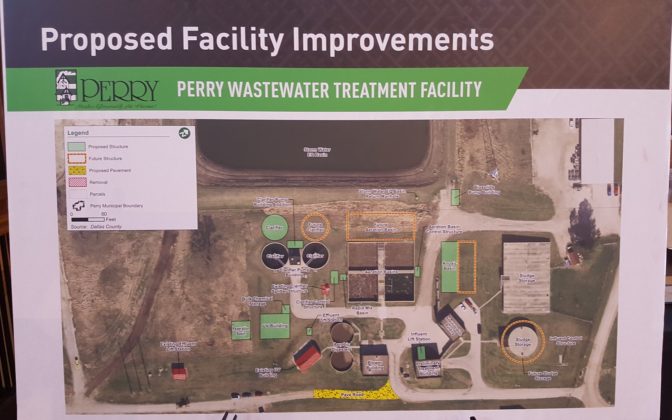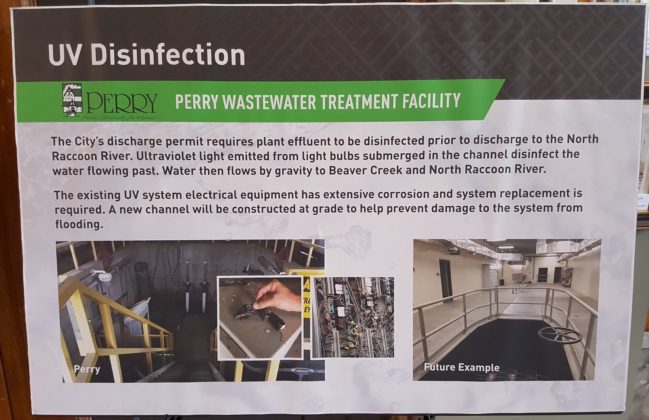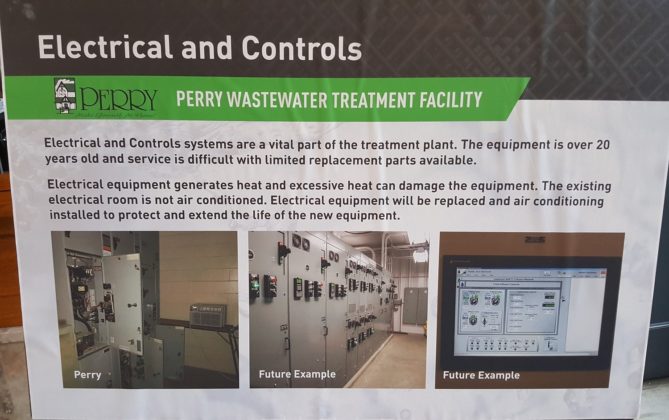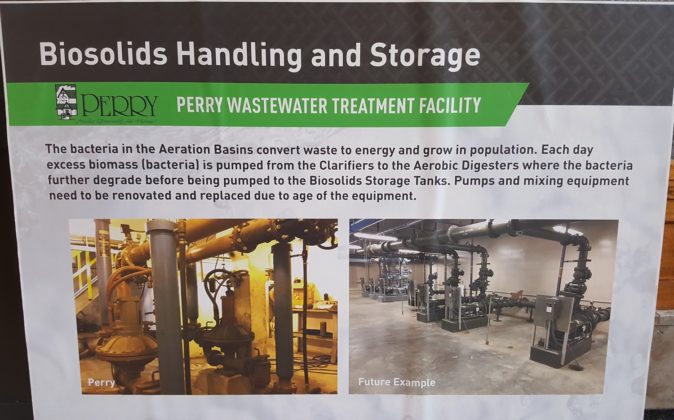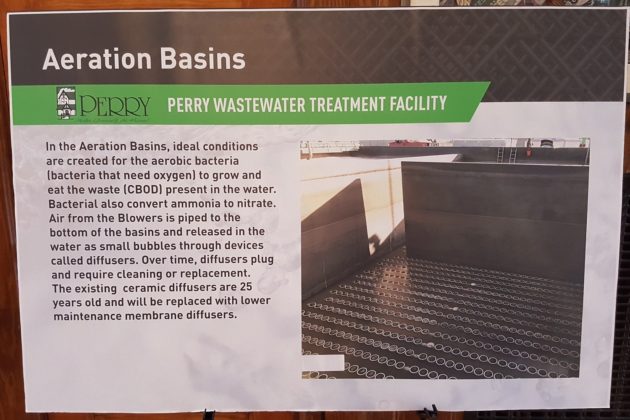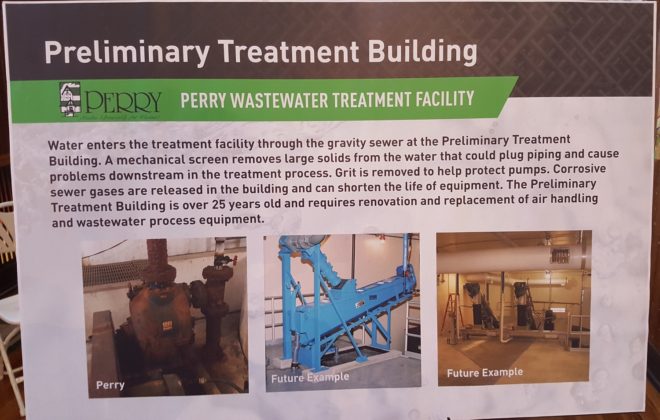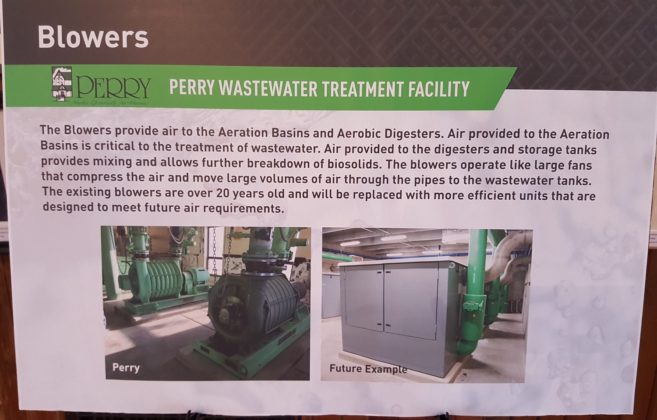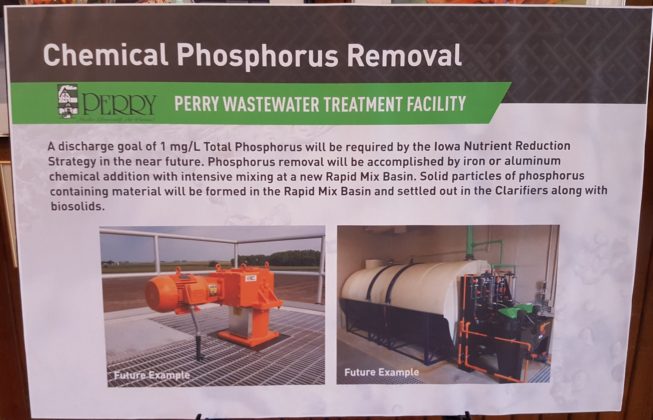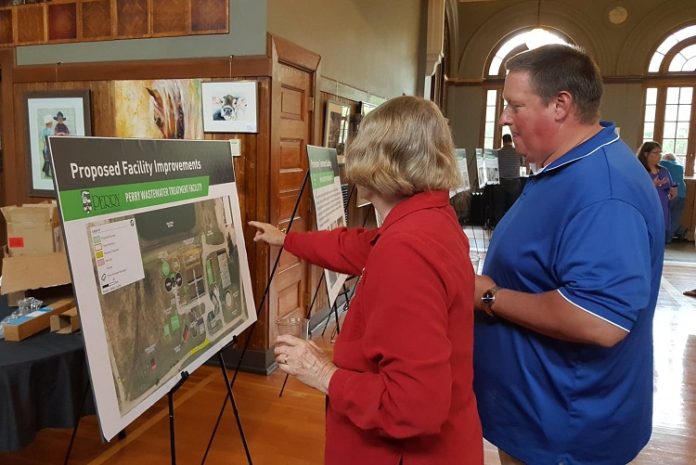
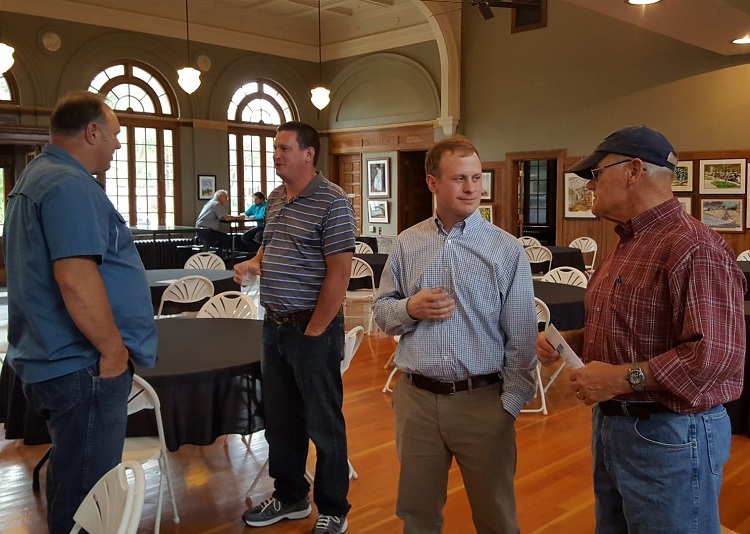
The Perry City Council approved a six-year series of sanitary sewer rate hikes Monday to help pay for the planned $18 million in improvements to the Perry wastewater treatment plant.
The incremental upward adjustments will see residential and commercial sewer-availability rates rise from the current monthly fee of $9.65 to $25.65 a month by the year 2024. The first rate increase, a $6 jump from $9.65 to $15.65, will take effect Oct. 1 and will be reflected in the November utility bills issued by the Perry Waterworks.
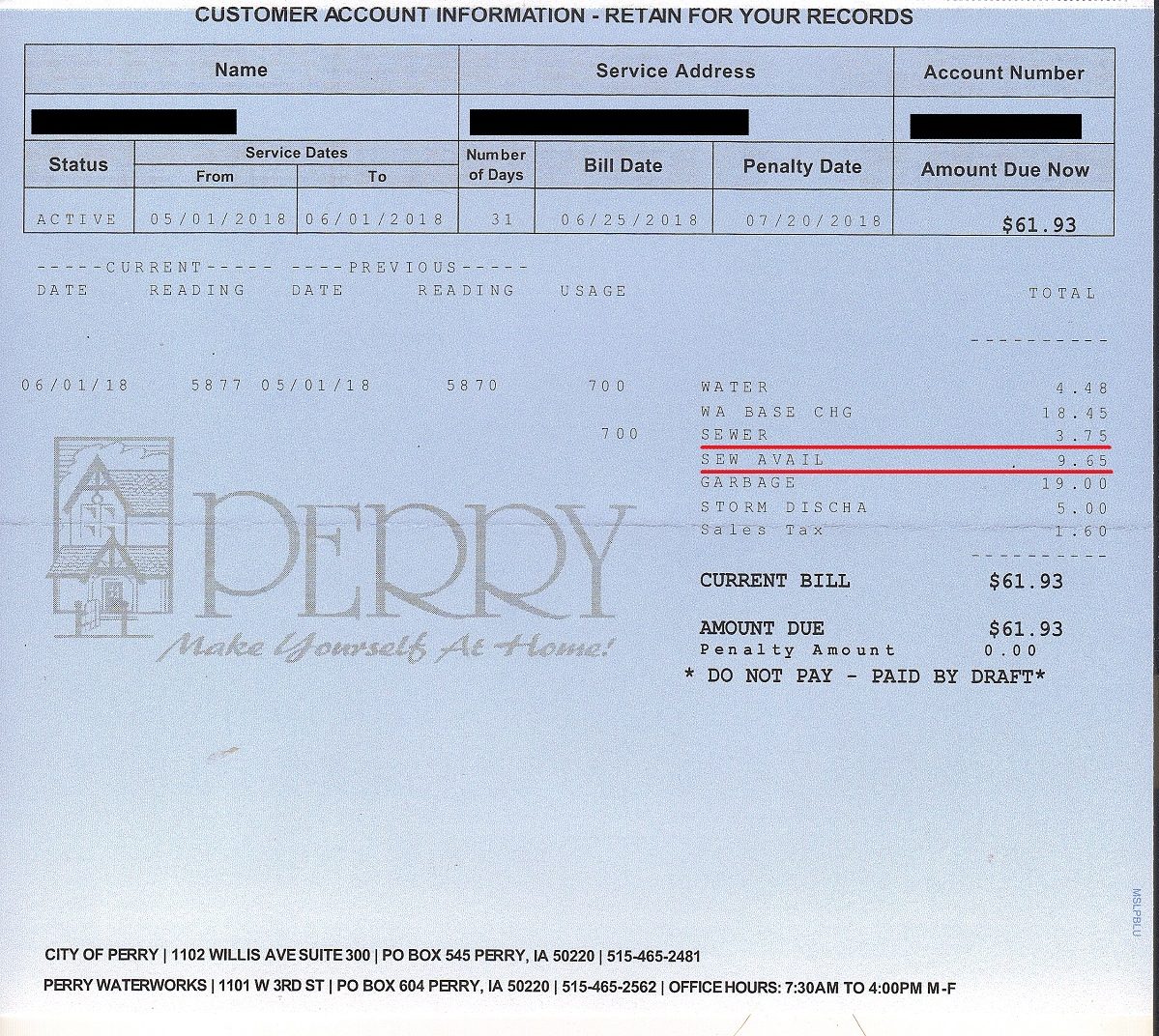
The current monthly usage fee of $3.75 per 1,000 gallons for residential users and $3.90 per 1,000 gallons for commercial and industrial users will also jump. By 2024 residential customers will pay a mothly rate of $5.69 per 1,000 gallons and all others will pay $5.91 per 1,000 gallons.
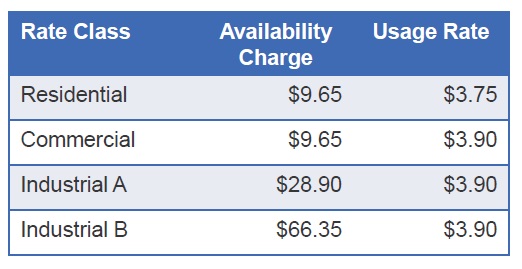 The rates for the city’s two classes of industrial customers will also jump but since the city of Perry has no industrial customers at present, the price rises will fall on residential and commercial customers only. The financing schedule calls for both the availability charge and the usage fee to increase annually beginning in FY 2019 and ending in FY 2024.
The rates for the city’s two classes of industrial customers will also jump but since the city of Perry has no industrial customers at present, the price rises will fall on residential and commercial customers only. The financing schedule calls for both the availability charge and the usage fee to increase annually beginning in FY 2019 and ending in FY 2024.
About 91 percent of the city’s annual revenue from the sanitary sewer system — about $950,000 — comes from residential users, and about 9 percent of bills are paid by commercial customers. In terms of usage, about 82 percent of the treated sewage is produced by residential users and about 18 percent comes from commercial sources.
The increases in monthly rates and charges for all classes of sanitary sewer customers are shown in tabular form below:




According to preliminary estimates presented to the Perry City Council in July by Bolton and Menk, the city’s engineering consultants, about $15.6 million of the project’s $18 million cost could be financed through a loan from the Clean Water State Revolving Fund (CWSRF), with an additional $850,000 coming through a federal Community Development Block Grant (CDBG) and $1.7 million from the city’s cash on hand.
The CWSRF is jointly administered by the Iowa Department of Natural Resources (DNR) and the Iowa Finance Authority (IFA). About $5 million in CWSRF funds would be borrowed for 20 years and the other $10.5 million would be borrowed for 30 years. The loans will be repaid through the higher sanitary sewer rates approved at Monday’s meeting.
Perry residents had an opportunity to inspect the details of the $18 million project at an Aug. 23 informational open house at La Poste. Several members of the Perry City Council joined Perry Mayor John Andorf, Perry City Administrator Sven Peterson, Bolton and Menk engineers Matt Ferrier and Andrew Sindt and Perry Pollution Control Facility operators Dave Gliem and Jimmy Kezar for the educational session.
Perry’s wastewater facility last saw significant capital improvements in the early 1990s. Worn-out structures and ever-stricter pollution standards imposed by the Iowa Department of Natural Resources (DNR), particularly in the discharge of nutrients like ammonia, now make the costly upgrades necessary, according to city officials.
The following series of posters was displayed at the informational meeting, illustrating the proposed replacements and refurbishments at the wastewater treatment facility.









